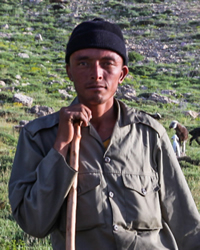Larestani in Iran

Photo Source:
Ninara - Flickr
Creative Commons
|
Send Joshua Project a map of this people group.
|
| People Name: | Larestani |
| Country: | Iran |
| 10/40 Window: | Yes |
| Population: | 126,000 |
| World Population: | 126,000 |
| Primary Language: | Lari |
| Primary Religion: | Islam |
| Christian Adherents: | 0.00 % |
| Evangelicals: | 0.00 % |
| Scripture: | New Testament |
| Ministry Resources: | Yes |
| Jesus Film: | No |
| Audio Recordings: | Yes |
| People Cluster: | Persian |
| Affinity Bloc: | Persian-Median |
| Progress Level: |
|
Introduction / History
The Larestanis, closely related to the Iranian majority ethnically and linguistically, have their own language, which is very similar to Farsi, Iran s trade language. They live in a region of valleys and low mountains in southwestern Iran, where, like their ancestors, some are farmers or nomadic shepherds of camels, horses and sheep.
What Are Their Lives Like?
Their region is one of the poorest in Iran, where there is no reliable supply of fresh water, hindering the growth and development of agriculture. Leaving one of the most economically undeveloped regions in Iran, many Larestanis have migrated to other parts of Iran for work.
What Are Their Beliefs?
Usually they are Sunni Muslim, unlike the Shia majority of Iran.
What Are Their Needs?
There may be no Christian believers among the Larestanis, so they will need to hear of the savior from outsiders.
Prayer Points
Pray that our Lord will call these people to himself by astounding them with life-giving showers of abundant water on their arid land.
Pray for dreams and visions of a savior who offers living water for their souls.
Pray for the Holy Spirit to move powerfully among Larestani family leaders.